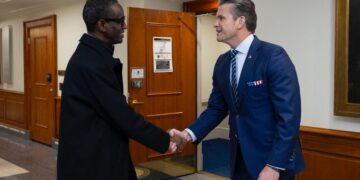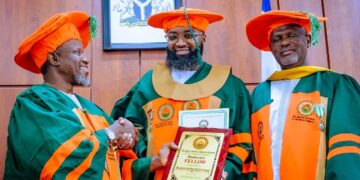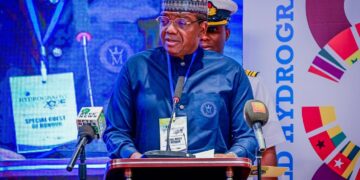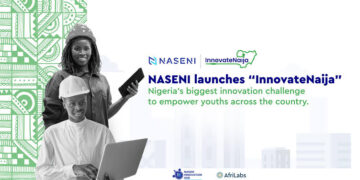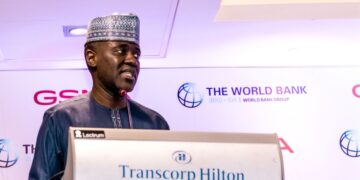When Khalil Suleiman Halilu assumed the leadership of the National Agency for Science and Engineering Infrastructure (NASENI), he inherited an institution with vast technical potential. Its achievements however too often remained constrained within laboratories and prototypes.
Over the past two years, however, NASENI has embarked on a transformative journey, under Halilu’s stewardship, that reframes the agency not just as a research entity, but as a vital engine of industrial innovation and national development. The key to that transformation has been collaboration: partnerships that bridge research and real-world production, policy and practice, local expertise and global technology.
NASENI’s guiding philosophy under Halilu has been to align all its activities with Nigeria’s national development goals, while striving to conserve resources, avoid duplication of effort, and shorten the time it takes for a product to move from R&D to market. Realising this requires strong, deliberate partnerships—ones that bring in expertise, funding, capacity, and shared responsibility.
One of NASENI’s flagship collaborations is with China Great Wall Industry Corporation, which is enabling a turnkey assembly line for unmanned aerial vehicles (UAVs). This partnership transfers skills, raises quality standards, and strengthens Nigeria’s capacity in aerospace and surveillance technology.
Similar ambition is evident in the agreement with Shanghai Launch Automotive Technical Co., which aims to establish a facility for electric vehicles. Local manufacture of EVs under this arrangement promises cleaner transport options and the development of ancillary manufacturing—battery assembly, charging infrastructure, and skilled technical labour. Recently, I saw one of the NASENI trucks built under this partnership in the Federal Capital Territory. I felt proud.
Clean energy features repeatedly in NASENI’s partnership portfolio. An MoU with Newway Power Technology Company Ltd focuses on lithium batteries and related technologies; off-grid solar lighting systems are being deployed to tens of thousands of homes through a partnership with A Solar Systems Limited. Sunracks Limited is helping to set up Nigeria’s first solar mounting rack factory. Such efforts support the country’s energy security, reduce costs of imports, and help communities gain reliable electricity in remote locations.
NASENI’s influence also extends to agriculture and food security. The collaboration with MECA to refurbish over fifty-five thousand moribund tractors has given a new life to equipment once abandoned, boosting mechanised farming in states that have long suffered neglect. At the same time, the joint venture with Saputra Global Fertilizer for a coal-based fertilizer plant promises to reinvigorate local fertilizer production—a strategic move to reduce dependency on expensive foreign imports and stabilise input costs for farmers.
Housing, infrastructure, and inclusion have not been forgotten. NASENI is in partnership with the Family Homes Funds Limited to promote modern, sustainable housing designs that use locally manufactured materials and efficient building techniques.
The partnership with IMOSE Technologies to produce indigenous laptops and smartphones is another strong statement from the agency, emphasizing that digital inclusion must begin with devices produced in-country. Simultaneously, collaboration with the National Commission for Persons with Disabilities ensures that assistive technologies are built into NASENI’s innovation portfolio, extending the benefits of technology to all citizens.
Another compelling collaboration is with Caverton Offshore Group to domesticate helicopter manufacturing, maintenance, and drone technology. This effort aims not simply at servicing offshore operations or private use, it also seeks to build a local aerospace support base that can reduce costs, foster skilled jobs, and elevate Nigeria’s defense and commercial capacity in a domain where maintenance, safety, and local competence are crucial.
Beyond sectoral partnerships, NASENI’s internal architecture has been retooled to sustain these collaborations. The Accelerated Technology Transfer Framework, introduced under Khalil Halilu, formalises the pathway from prototype to production, ensuring that research doesn’t stay idle but gets adopted by industry. Through this framework, NASENI has avoided redundancies, prioritised market-ready designs, and pushed for increased accountability in timelines and outcomes.
The results are visible: factories in planning, production lines being set up, local technicians being certified, and innovations moving out of the lab. Financially, MoUs and agreements have begun yielding investor interest; the promise of local EV manufacture, solar infrastructure, and digital device production is attracting both domestic and international capital. Importantly, this is not done in competition with the private sector, but in collaboration—as NASENI positions itself more clearly as enabler, not rival.
Of course, challenges remain. Import dependence for certain critical components, funding gaps in scaling production, certification and regulatory alignment, and ensuring that consumer trust keeps pace with local content all require persistent attention. But the institutional reforms, team management, and culture of partnership instilled under Halilu offer strong foundations to address these.
Looking ahead, NASENI is exploring additional ventures in coal-based fertilizer, affordable housing, renewable energy, aviation technology, and supply chain development. Each new project adds a layer to what is becoming a multifaceted ecosystem of innovation and impact.
– Bature Danlami, a technology enthusiast writes from Kano State.


